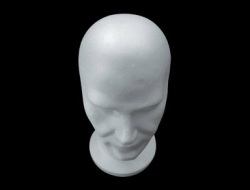 Hair may start to disappear from the temples and the crown of the head at any time. For a few men this process starts as early as the later teenage years, but for most it happens in their late 20s and early 30s.
Hair may start to disappear from the temples and the crown of the head at any time. For a few men this process starts as early as the later teenage years, but for most it happens in their late 20s and early 30s.
Male pattern baldness is generally thought to result from an over sensitivity of scalp hair follicle to a chemical called dihydrotestoserone or DHT.
A little thinning of the hair may be noticeable first, followed by wider hair loss allowing more of the scalp to become visible.
Some men aren’t troubled by this process at all. Others, however, suffer great emotional distress associated with a lack of self-confidence and sometimes depression.
You cannot prevent it, although there may be ways of slowing down the process. Other types of hair loss, such as alopecia are medical conditions and you should seek your GP’s advice as you would for any other medical problem. Hair loss can also be caused by: iron deficiency anaemia, under active thyroid, fungal scalp infections, some prescribed medicines and stress. If this is the case then your GP should be able to help out as the process may be reversible.
- Two-thirds of all men will eventually be affected by male pattern baldness – in the UK, this means that 7.4 million men are losing their hair at any one time.
- There are racial differences with the highest rates among Caucasians, followed by Afro-Caribbeans. Chinese and Japanese men have the lowest rates. For some unknown reason, this form of hair loss is does not occur among Native Americans.
- Male pattern baldness runs in the family. If your grandfather, father or brothers went bald early, the chances are that you will too. The strongest influence is on the mother’s side: if your maternal grandfather went bald, that’s probably a better indicator that you will too.
What can you do?
For possible ‘treatments’ and further information see the article on malehealth.co.uk
Check out the news item: Now bald men can blame dad and have your say on the forum.








